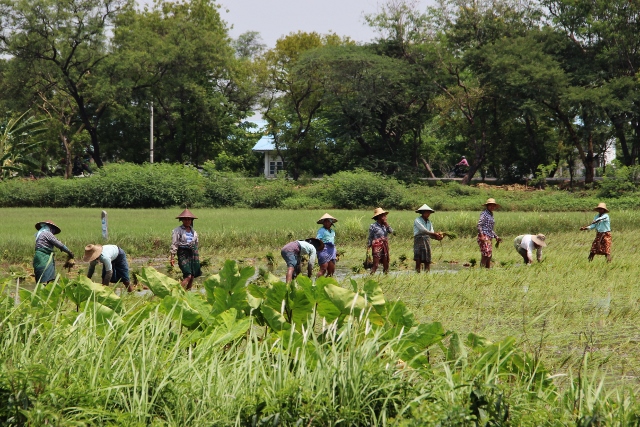News & Updates
Myanmar’s Government must act to build an inclusive financial sector
29 November 2016

Myanmar’s financial sector is undergoing a significant transition. Since 2012, it has witnessed a number of reforms including, the expansion of private banks, the installation of thousands of ATM machines, the steady growth of private sector credit (albeit from a low foundation) and the issue of more than 1.4 million debit cards.
However, Myanmar’s financial sector remains inefficient and uneven as it is heavily concentrated in urban areas. As a result, the rural population is being left without access to financial services.
Myanmar is the second largest country in Southeast Asia and two-thirds of Myanmar’s 62 million people live in rural areas. Of the total adult population, around 70 percent are financially excluded, with only 5 percent active holders of bank accounts.
Consequently, the majority of financial transactions are still conducted in cash. According to the World Bank’s Global Findex database, approximately 95 percent of adults receive their salaries in cash, which is the highest ratio in the Southeast Asia region.
Paul Luchtenburg, Programme Specialist for Inclusive Finance at the United Nations Capital Development Fund (UNCDF), said Myanmar’s underdeveloped financial infrastructure, compounded by its macro-economic instability and inflationary pressures, continues to hold back the country’s poorest. In addition, growing demand versus a lack of supply of microfinance from urban-focused private banks, many of which lend at interest rates above 10 percent, raises a systemic barrier to development in Myanmar.
“Regulators are not enabling but rather, constraining financing outreach to rural areas,” he said.
According to UN data, around 9 million adults in Myanmar source loans from informal providers, the total outstanding value of which is about US$3.6 billion.
“There is a gap in the provision of loan sizes. MFIs average about US$120 for loans and banks US$70,000. Between these two amounts, is a large gap of unserved clients,” Luchtenburg explained. He added that the total outstanding loan activity for microfinance in Myanmar is US$223 million, while local companies make up the vast proportion of microfinance activity, followed by foreign firms and NGOs.
However, Myanmar’s Government has expressed intentions to reform policies that have a direct impact on the financial sector. There have been evident attempts to build local capacity such as programmes to train people in regulatory skills. Although there are concerns that these are merely short-term fixes.
U Kyaw Win, Myanmar’s Minister of Finance, has emphasised the need to assist the Myanmar’s poorest, calling financial inclusion a cause of “revolution, not evolution”.
Fortunately, there are many lessons to draw from both regionally and internationally. Thailand and Malaysia, for example, faced similar transitions and challenges in building robust and stable financial systems following the Asian Financial Crisis in 1997-1998. Since then, both have achieved success in in increasing financial access to very high levels by international standards.
Furthermore, smartphone penetration in Myanmar, and the rapid proliferation of data usage, presents an innovative way of reaching the millions of unbanked. Current estimates show that between 70 and 80 percent of devices in Myanmar are smartphones, the majority of which are frequently accessing data.
The 3rd annual Aid & Development Asia Summit will take place on 14-15 June 2017 in Nay Pyi Taw, Myanmar (Burma). Gathering over 250 local, regional and global humanitarian and development professionals from NGOs, UN agencies, donors, governments and the private sector with an aim to share knowledge, discover success stories or learn from failures, foster innovation and partnerships to assist the Sustainable Development Goals in Asia, with a particular focus on Myanmar (Burma).
The over 70 expert speakers will share valuable insights, lead thought provoking discussions and lively exchange of views on a range of vital topics including mobile innovations, partnerships and technologies for humanitarian and development work, emergency response, humanitarian logistics, disaster resilience as well as health & WASH programmes and good practice.
For more information please visit: http://asia.aidforum.org/